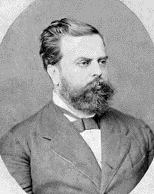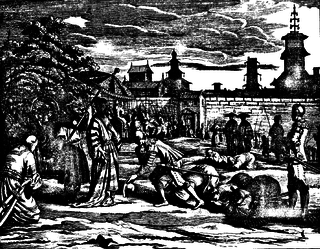
The Kingdom of Sitawaka was a kingdom located in south-central Sri Lanka. It emerged from the division of the Kingdom of Kotte following the Spoiling of Vijayabahu in 1521, and over the course of the next seventy years came to dominate much of the island. Sitawaka also offered fierce resistance to the Portuguese, who had arrived on the island in 1505. Despite its military successes, Sitawaka remained unstable, having to contend with repeated uprisings in its restive Kandyan territories, as well as a wide-ranging and often devastating conflict with the Portuguese. Sitawaka disintegrated soon after the death of its last king Rajasimha I in 1593.
The Governor of Ceylon can refer to historical vice-regal representatives of three colonial powers:

Pedro Luís Pereira de Sousa was a Brazilian poet, politician, orator and lawyer, adept of the "Condorist" movement. He is the patron of the 31st chair of the Brazilian Academy of Letters.
Fernão Carvalho was the 4th Captain-major of Portuguese Ceylon. Carvalho was appointed in 1553 under John III of Portugal, he was Captain-major until 1555. He was succeeded by Afonso Pereira de Lacerda.
Afonso Pereira de Lacerda was the fifth captain-major of Portuguese Ceylon. Lacerda was appointed in 1555 under Sebastian of Portugal. He served as captain-major until 1559. He was succeeded by Jorge de Meneses Baroche.
Baltasar Guedes de Sousa was the 7th Captain-major of Portuguese Ceylon. Sousa was appointed in 1560 under Sebastian of Portugal, he was Captain-major until 1564. He was succeeded by Pedro de Ataíde Inferno.
Pedro de Ataíde Inferno was the 8th Captain-major of Portuguese Ceylon. Inferno was appointed in 1564 under Sebastian of Portugal, he was Captain-major until 1565. He was succeeded by Diogo de Melo.
Simão de Brito was the 16th Captain-major of Portuguese Ceylon. Brito was appointed in 1590 under Philip I of Portugal, he was Captain-major until 1591. He was succeeded by Pedro Homem Pereira.
The Siege of Kotte from November 1557 – November 1558 was a battle part of the Sinhalese–Portuguese War. A 50,000 strong Sitawaka army led by King Mayadunne besieged Sri Jayawardenapura Kotte, the capital of Kotte Kingdom for 12 months against a combined force of Portuguese and lascarins led by Captain-major Dom Afonso Pereira de Lacerda. After receiving reinforcements from Mannar, Portuguese made a sally and succeeded in forcing the besiegers to withdraw. This siege marked the beginning of a series of battles between Portuguese and Sitawaka forces, and ultimately ended as Portuguese abandoned Sri Jayawardenapura Kotte in 1565.
The Danture campaign comprised a series of encounters between the Portuguese and the Kingdom of Kandy in 1594, part of the Sinhalese–Portuguese War. It is considered a turning point in the indigenous resistance to Portuguese expansion. For the first time in Sri Lanka a Portuguese army was essentially annihilated, when they were on the verge of the total conquest of the island. A 20,000-strong Portuguese army, led by Governor Pedro Lopes de Sousa, invaded Kandy on 5 July 1594. After three months, severely depleted by guerilla warfare and mass desertions, what remained of the Portuguese army was annihilated at Danture by the Kandyans under King Vimaladharmasuriya. With this victory, the Kingdom of Kandy emerged as a major military power; it was to retain its independence, against Portuguese, Dutch, and British armies, until 1815.

The Sinhalese–Portuguese War was a series of conflicts waged from 1527 to 1658 between the indigenous Sinhalese kingdoms of Ceylon and their allies against the Portuguese Empire. The Portuguese were seeking to expand from their trading post at Colombo to incorporate Ceylon into their growing empire.
Pedro Miguel Almeida Lopes Pereira is a Portuguese footballer who plays as a right back for Italian club Genoa on loan from Benfica.
Pedro Pereira may refer to:
Francisco de Vasconcelos da Cunha was a Portuguese colonial administrator. He was born around 1590, and was governor of Portuguese Cape Verde from 1624 to 1628. He succeeded Manuel Afonso de Guerra who was also the Bishop of Santiago de Cabo Verde. He was succeeded by João Pereira Corte-Real. In 1634, he became the captain-general of Portuguese Angola, succeeding Manuel Pereira Coutinho. He was succeeded on 18 October 1639 by Pedro César de Meneses.



